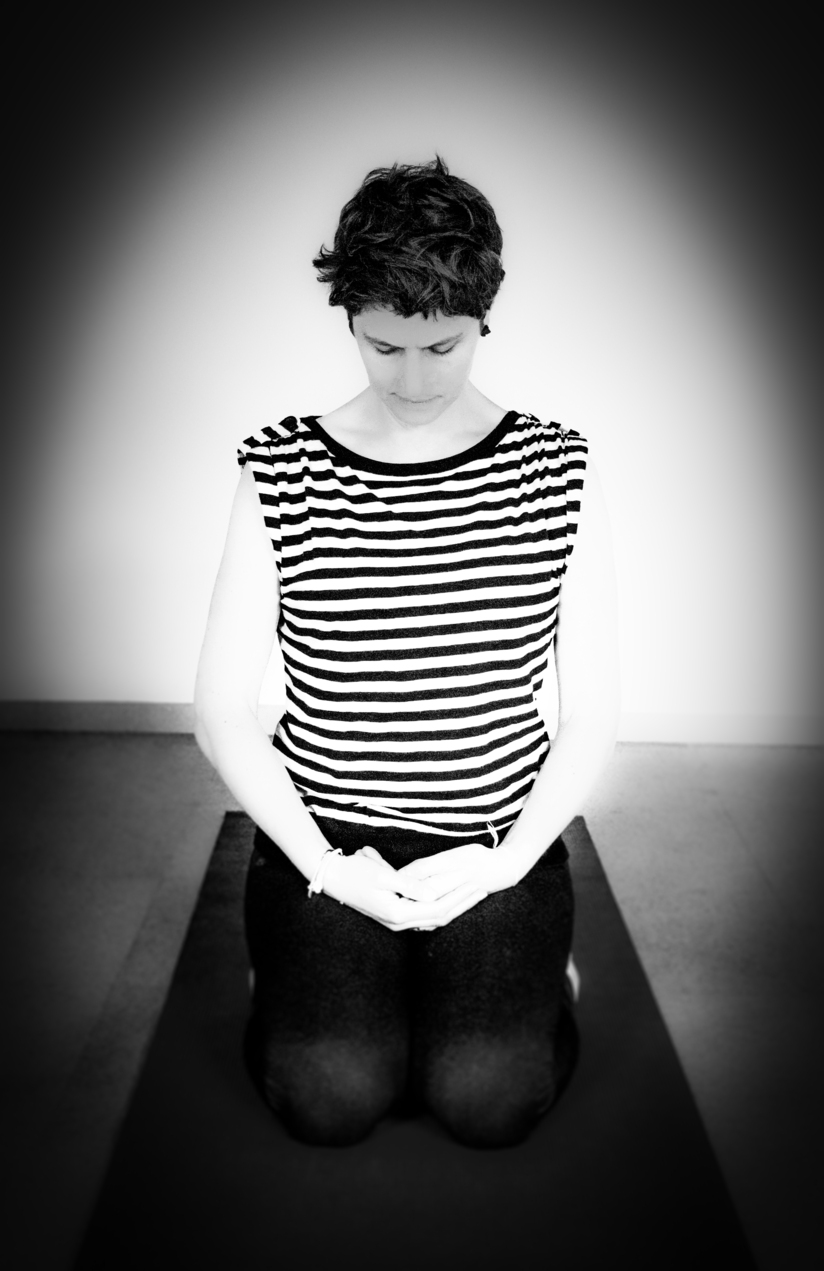- Home
- Trauma Sensitive Yoga (TCTSY)
Trauma Sensitive Yoga (TCTSY)

A Trauma Sensitive Yoga practice can look and feel quite different to a general yoga class. The intention in a trauma sensitive yoga session is to create a safe, predictable and non-judgmental space in which participants may explore the notion of “having a body”. The trauma sensitive yoga session provides an opportunity to safely experiment with breathing, moving, strengthening, stretching and resting. There is a focus on participants making their own choices about what and how they practice, and the careful use of invitational language ensures that each participant is practising in a way that feels safe and manageable for them.
Judith Herman defines trauma in this way: "Traumatic events are extraordinary, not because they occur rarely, but rather because they overwhelm the ordinary human adaptations to life. Unlike commonplace misfortunes,traumatic events generally involve threats to life or bodily integrity, or a close personal encounter with violence and death. They confront human beings with the extremities of helplessness and terror, and evoke the responses of catastrophe." Herman explains that 'traumatic events overwhelm the ordinary systems of care that give people a sense of control, connection,and meaning."
The TCTSY (Trauma Center Trauma Sensitive Yoga) methodology is based on central components of hatha yoga, where participants engage in a series of physical forms and movements.
Through the experience of trauma, the body can become a place that is not safe, and a place from which it is difficult to simply experience everyday life. It can be an enormous part of the healing process for a survivor of trauma to reclaim their body as their own.
By taking time to notice their body, and to safely explore choice in moving their body, participants may begin to develop some sense of connection to their body and can experiment with strategies that allow them to face feelings and triggers in a safe, non-harmful way.
Trauma can be experienced as a result of physical or sexual violence; the refugee journey; experiencing or witnessing a car (or other) accident; severe illness and/or medical intervention; traumatic childbirth among many other things.
The TCTSY (Trauma Center Trauma Sensitive Yoga) methodology is based on central components of hatha yoga, where participants engage in a series of physical forms and movements. Elements of traditional yoga are modified to build trauma survivors’ experiences of empowerment and cultivate a more positive relationship to one’s body. Unlike many public 'general' yoga classes, TCTSY does not use physical, hands-on adjustments to influence a participant’s physical form. Rather, TCTSY presents opportunities for participants to be in charge of themselves based on a felt sense of their own body.
Developed at theTrauma Center in Boston, TCTSY is an empirically validated, clinical intervention for complex trauma or chronic, treatment-resistant Post Traumatic Stress Disorder (PTSD). In addition to yoga, TCTSY has foundations in Trauma Theory, Attachment Theory, and Neuroscience. More information, resources and interesting reading can be found at www.traumasensitiveyoga.com and www.tctsyaustralia.com
Clare facilitates regular TCTSY sessions online and in the Monbulk studio, as well offering programs within a number of trauma services/community organisations in Melbourne. These sessions are open to people who identify as women who have experienced trauma at any time in their lives.
Individual TSY sessions are also available for any survivor of trauma who feels a 1:1 approach is more useful to them.
"I felt like I could hold my head a little higher and body more firmly after each session. I only felt stronger each session, both mentally and physically." 2019 TCTSY participant
You may also be interested in...
- catherine (under Testimonials)
I have had the pleasure of doing trauma sensitive yoga with Clare for the past few years.
- TCTSY (under Yoga Sessions)
Monday Trauma Centre Trauma Sensitive Yoga (TCTSY) sessions are offered online via Zoom at 1pm.
- Private Sessions (under Yoga Sessions)
Individual TCTSY sessions are sometimes a preference for survivors of trauma who find the group dynamic inaccessible.
- Yoga Sessions for School-Starters (under Yoga for Kids)
A series of yoga classes for children beginning school.
